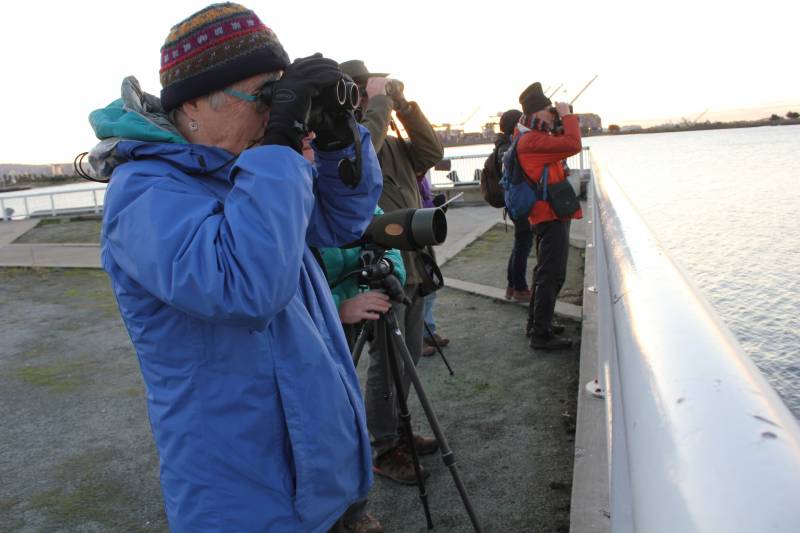As the sun rose over the Port of Oakland, a group of about ten people donning jackets and hats peered through their binoculars. They are near Port View Park, scanning the sky for birds, like the Dark-eyed Junco or the Fox Sparrow.
The group is part of a larger set of about 250 Oakland bird watchers who participated in the 79th annual Christmas Bird Count on Sunday. It's one of 2,615 bird counts around organized by the Audubon Society that helps provide data on whether bird populations are growing or declining and reveal overall trends.
"You're out in nature, you're volunteering for a task that has a purpose, and you are seeing a lot of birds," said Judith Dunham, leader of the Port View Park group. "And it's really wonderful to spend the day contributing to citizen [led] science."
In the Oakland area, there have been long-term declines of certain bird populations. Dark-eyed Juncos have decreased by 35 percent, Fox Sparrows, 42 percent and Brewer’s Blackbirds, 65 percent. Tricolored Blackbirds have not been spotted at all in the past few years. There are also birds that have thrived, like the American crow and wild turkeys.


